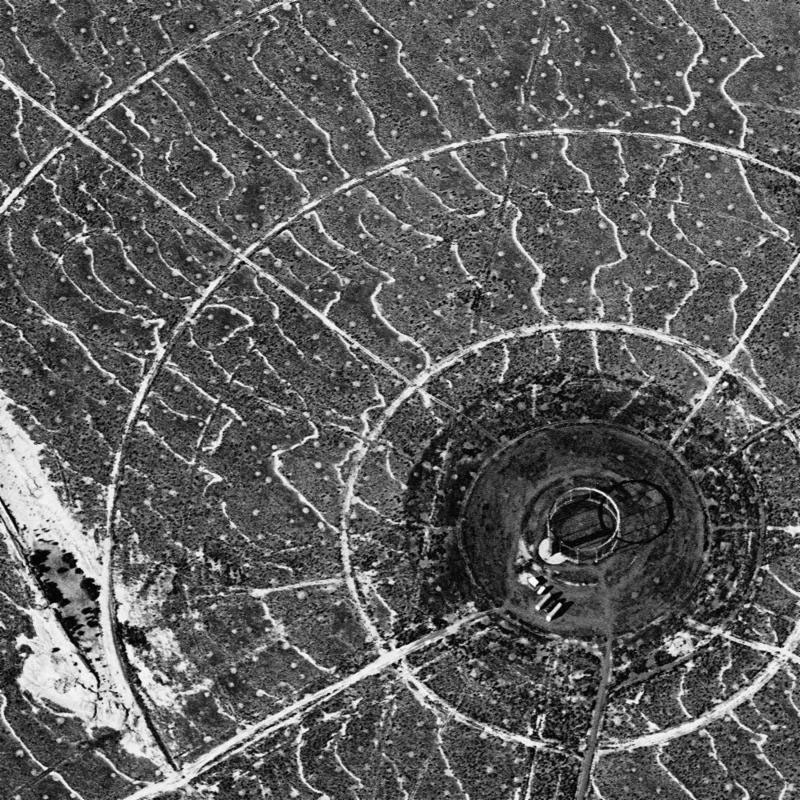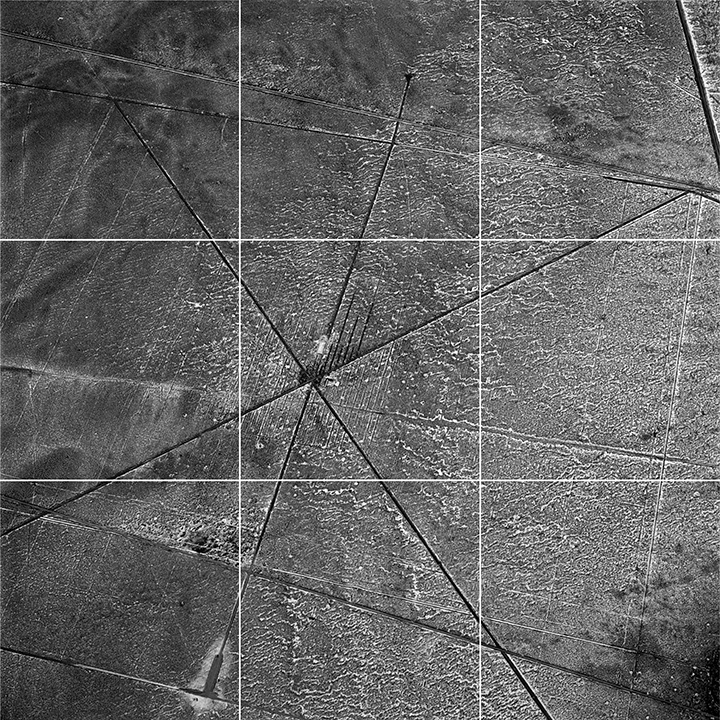(Released by the John Simon Guggenheim Memorial Foundation)
David Maisel is a visual artist working in photography and video whose work has explored hidden landscapes, archives, and histories of the American west for more than three decades. Proving Ground, his most current series, examines the site of Dugway Proving Ground, a classified military setting in Utah’s Great Salt Lake Desert devoted to testing and development of chemical and biological weapons and defense systems.
Black Maps, Maisel’s multi-chaptered project of aerial photographs depicting environmentally impacted sites throughout the United States, considers the aesthetics and politics of radically human-altered environments. Maisel’s large-scaled photographs of open pit mines, clear-cut forests, rampant sprawl, and zones of desertification take the viewer toward the margins of the unknown, and posit an expanded definition of contemporary landscape. The Lake Project comprises Maisel’s work at Owens Lake, the site of a formerly 200 square-mile lake on the eastern side of the Sierra Mountains in California whose water has been drained and diverted to the desert city of Los Angeles, exposing vast mineral beds that yield carcinogenic dust storms. Maisel’s resulting images are deeply disorientating, at once beautiful and terrifying; “a topography of open wounds,” as curator Julian Cox has written. Inspired by the writings and sculptures of Robert Smithson, Maisel’s Terminal Mirage offers abstracted, vertiginous views of the Great Salt Lake depicting “salt water and chemical flats vaulting to the vertical, suddenly inhabiting the space and conditions of a painted canvas, the world of Rothko, Diebenkorn, and Kiefer,” as Joseph Thompson has written of this work.
In projects such as Library of Dust and History’s Shadow, Maisel investigates institutional archives, and shows the power of objects to convey meaning over time. Library of Dust depicts one hundred copper canisters, each containing the cremated remains of a psychiatric patient unclaimed after their death. The canisters have reacted with their ashen remains, causing vibrant mineral encrustations to bloom on their metallic surfaces. As a visiting scholar at the Getty Research Institute, Maisel began History’s Shadow, in which he utilized x-rays depicting sculpture, painting, and artifacts from antiquity as source material for the creation of new photographic artwork. Through the x-ray process and the subsequent re-photography of these scientific records, the objects from antiquity move through a process of transmutation, becoming reanimated and renewed.
Maisel has been a Scholar in Residence at the Getty Research Institute (2007), and an Artist in Residence at the Headlands Center for the Arts (2008). He has served as a Trustee of the Headlands Center for the Arts since 2011. In addition to the 2018 Guggenheim Fellowship, Maisel has been the recipient of grants from the National Endowment for the Arts and the Center for Cultural Innovation. Mr. Maisel studied with Emmet Gowin and Peter Bunnell at Princeton University, from which he graduated in 1984; he received his MFA from California College of the Arts in 2006, in addition to study at Harvard University’s Graduate School of Design.
Mr. Maisel’s photographs are held in many public collections, including the Metropolitan Museum of Art, the Los Angeles County Museum of Art, the Victoria & Albert Museum, the National Gallery of Art, the J. Paul Getty Museum, the Brooklyn Museum of Art, the Santa Barbara Museum of Art, the Yale University Art Gallery, and the Museum of Fine Arts, Houston, among others. His photographs have been the subject of five monographs, including Black Maps: American Landscape and the Apocalyptic Sublime (Steidl, 2013), History’s Shadow (Nazraeli, 2011), Library of Dust (Chronicle, 2008), Oblivion (Nazraeli, 2006), and The Lake Project (Nazraeli, 2004). Upcoming monographs include Proving Ground (Steidl, 2018) and Mount St Helens: Afterlife (Ivorypress, 2018).
David Maisel’s work has been exhibited internationally, including Challenging Terrain: Landscape Photography in the 21st Century, opening June 2018 at the Denver Museum of Art; Landmark: The Fields of Photography (Somerset House, London); Surveying the Terrain, (Raleigh Contemporary Art Museum, Raleigh); History Recast: Contemporary Photography of Classical Sculpture (American Academy, Rome); Memory Theater, Memorial Art Gallery, Rochester, NY; Infinite Balance: Artists and the Environment (Museum of Photographic Arts, San Diego); Imagination Earth (Seoul Arts Center); Imaging a Shattering Earth: Contemporary Photography and the Environmental Debate (Museum Of Contemporary Art, Toronto, and the National Gallery of Art, Ottawa); Dark Matters: Artists See the Impossible (Yerba Buena Center for the Arts, San Francisco), and Ecotopia: the Photography Triennial (International Center of Photography, New York).
Maisel lectures regularly at museums, universities, and colleges. His work has been the subject of several symposia, including Library of Dust at the New York Institute for the Humanities (2009) and Black Maps at Harvard University’s Graduate School of Design (2016).
Click here to see more of David’s work on our website

